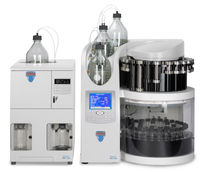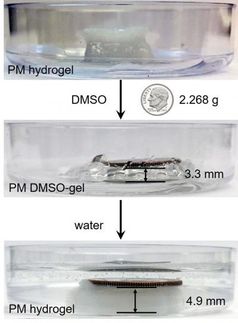Two ways to turn
LMU chemists have synthesized a new photo-activatable molecule, which shows two-dimensional switching behavior – an essential prerequisite for the construction of complex molecular machines.
Molecular photoswitches are chemical structures whose geometry can be regulated by means of light. Now researchers led by Dr. Henry Dube at the Department of Chemistry at LMU have developed such a switch, whose movements can be controlled with unprecedented precision. “Our new photoswitch is a two-dimensional one. In contrast to most other chemical switches, it can be operated in two modes,” explains Henry Dube, who heads an Emmy Noether research group at LMU.
The switch is derived from a compound classified as a hemithioindigo, in which a so-called thioindigo moiety is linked via a carbon double bond (C=C) and a single bond (C-C) to a planar aromatic ring. This derivative reacts to light by altering the orientation of the aromatic ring in different ways depending on the nature of the medium in which it finds itself. “And that allows us to control the intramolecular motion of the photoswitch with a degree of precision never before achieved for this class of molecules” says Dube. When the photoswitch is dissolved in the non-polar solvent cyclohexane, light causes rotation exclusively about the double bond mentioned above. In a polar medium such as DMSO (dimethylsulfoxide), on the other hand, the rotation occurs about the single bond in the linker. Moreover, the compound is the most efficient photoswitch of the hemithioindigo type yet developed,” Dube adds.
The new findings represent an important step toward the development of molecular components for the assembly of nanomachines: For the greater the degree of control available, the more complex are the functions that can be performed by such structures. Furthermore, Dube and his colleagues have determined why exactly the molecule behaves differently in solvents of different polarities. And their detailed understanding of the underlying reaction mechanism should enable the LMU researchers to apply this relatively simple way of controlling molecular motions to other types of chemical switches.
Original publication
Other news from the department science
These products might interest you

ERBAdry by CARLO ERBA Reagents
Anhydrous solvents from CARLO ERBA Reagents in a clever redesign
ERBAdry series impresses with the latest generation of septa and sealing caps

Thermo Scientific™ Dionex™ ASE™ 150 or 350 Accelerated Solvent Extractor systems by Thermo Fisher Scientific
Accelerated Solvent Extraction (ASE) – Maximize results and reduce errors in food analysis!
More extractions in less time using less solvent

Get the chemical industry in your inbox
By submitting this form you agree that LUMITOS AG will send you the newsletter(s) selected above by email. Your data will not be passed on to third parties. Your data will be stored and processed in accordance with our data protection regulations. LUMITOS may contact you by email for the purpose of advertising or market and opinion surveys. You can revoke your consent at any time without giving reasons to LUMITOS AG, Ernst-Augustin-Str. 2, 12489 Berlin, Germany or by e-mail at revoke@lumitos.com with effect for the future. In addition, each email contains a link to unsubscribe from the corresponding newsletter.























































